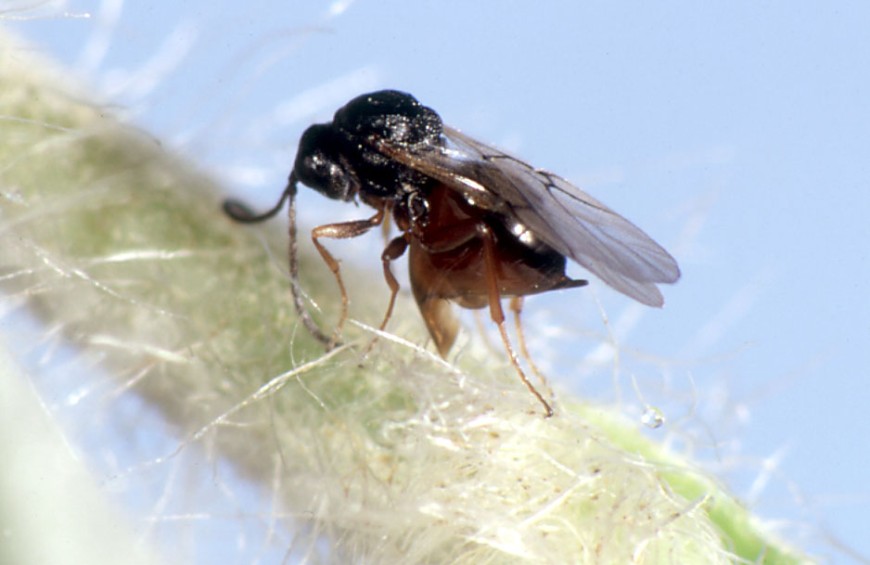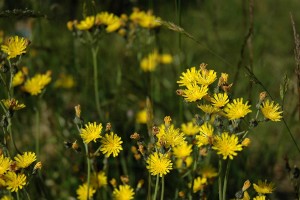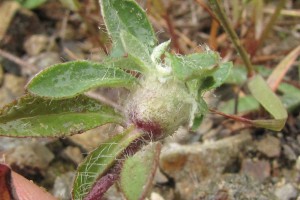Hieracium gall wasp
History in New Zealand
The hieracium gall wasp is native to northern Europe and it was first imported from Switzerland by Manaaki Whenua - Landcare Research, in conjunction with the Hieracium Control Trust, in 1997.
Releases of the gall wasp began in 1999 and they are now widespread in the South Island but have only established at 3 sites on the Central Plateau of the North Island.
How would I find/recognise it and what is its lifecycle?
You will not be able to easily differentiate the adult gall wasps in the field from other small- winged insects. The adults are small (2-3 mm long) and dark brownish-black in colour.
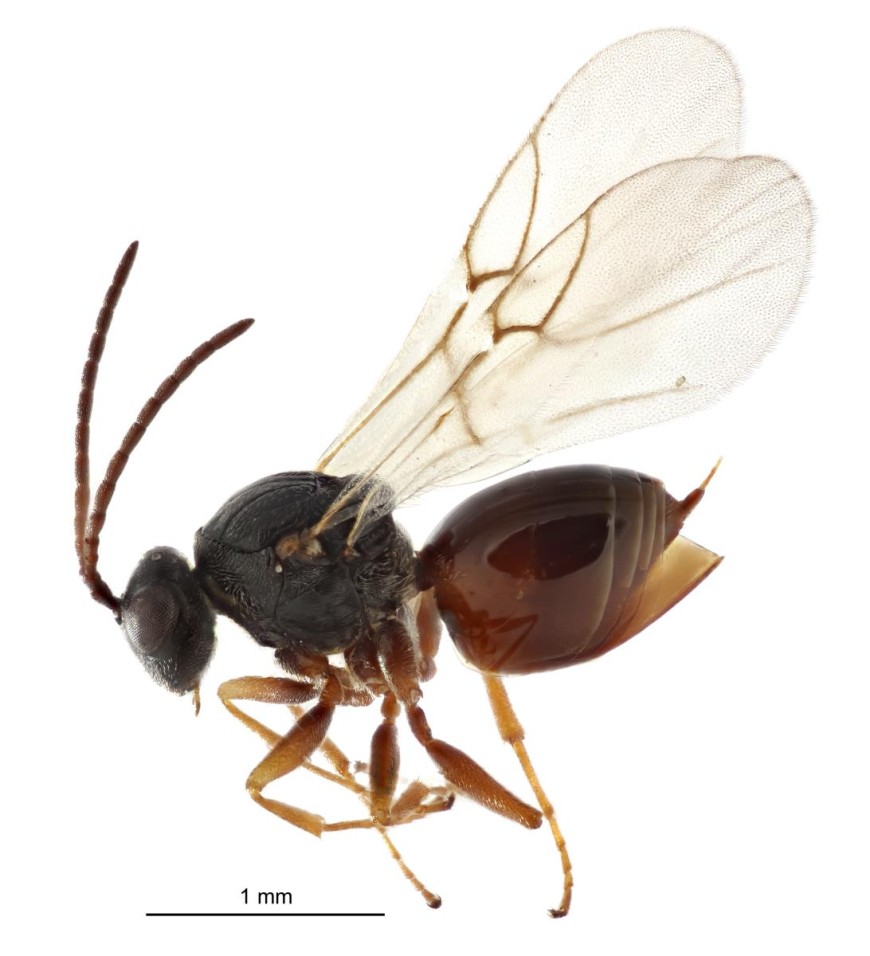
Image: Image: hieracium gall wasp (Aulacidea subterminalis).
Despite being wasps, like the vast majority of this family, they are harmless to humans and do not sting. Hieracium gall wasps are parthenogenetic (able to reproduce without fertilisation) so there are no males. Each individual lays tiny milky-white eggs inside the tips of stolons (the long runners that the plant uses to make new plants) in late spring. Each adult lays about 85 eggs and often several are laid in the same stolon tip.
Creamy-coloured larvae hatch and begin feeding inside the stolons over the summer. The plant responds by laying down extra tissue around the larvae. The larvae continue to feed and develop inside these galls for about 6-8 weeks and, gradually, swellings about the size of a pea begin to form around each larva. These fleshy, green galls are the most obvious sign that gall wasps are present in an area and the best time to look for them is in late summer. Once fully grown the gall wasp larvae remain inside the galls throughout autumn and winter. During this time the galls dry out and turn brown. In early spring the wasps pupate and new adults emerge soon after. Only one generation is produced each year.
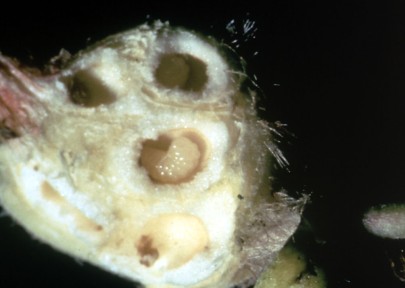
Image: hieracium gall wasp (Aulacidea subterminalis) larvae.
The hieracium gall midge (Macrolabis pilosellae) galls the plant crown and stolon tips but these galls are much softer and are associated with curled leaves. See Hieracium gall midge.
How does it damage hawkweeds?
Stolon growth is reduced in galled plants and this reduces their ability to spread vegetatively by producing daughter plants at the tips.
Image: hieracium gall wasp damage.
Image: hieracium gall wasp damage.
Will it attack other plants?
No, it is extremely unlikely that hieracium gall wasps will attack plants other than mouse-ear hawkweed (Pilosella officinarum) and orange hawkweed (H. Pilosella aurantiaca). The other weedy Pilosella and Hieracium spp. are unlikely to be attacked.
How effective is it?
A recent study in the South Island showed that wasps galled 67% of stolons, but there was no marked reduction in cover because only 7% of the plants found were actually producing stolons.. Previous lab trials showed that stolon growth is reduced in galled plants reducing vegetative spread.
How can I get the most out of it?
Wasps are now widespread in Canterbury and Otago at least so no further re-distribution should be required in the South Island. North Island populations are more difficult to establish and currently restricted to the Central Plateau. When harvestable numbers are present it would be worth helping to establish them in other areas in the North Island where they are needed.
How do I select a release site?
Read Guidelines for selecting release sites for biocontrol agents.
How do I collect it for release at other sites?
Harvest woody galls in the autumn and leave these on the ground in a safe and sheltered place (like the base of tussocks) so that the wasps can emerge the following spring. Aim to shift at least 100 galls if possible.
How do I manage the release sites?
Avoid activities that will interfere with the wasp's life cycle. Avoid herbicides if possible.
Key contact


